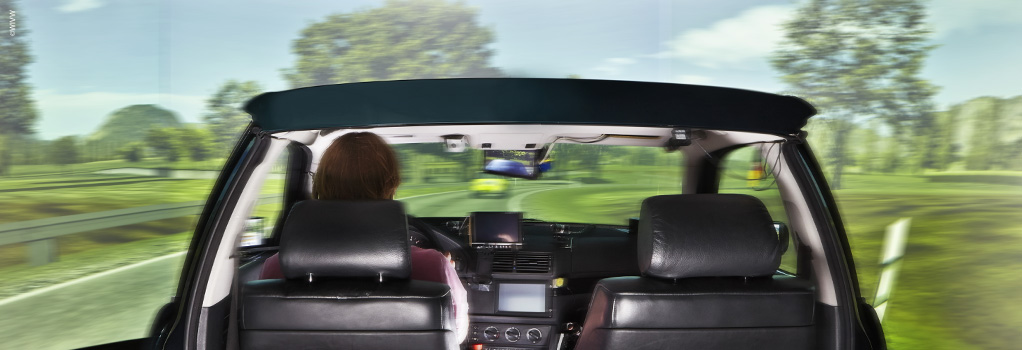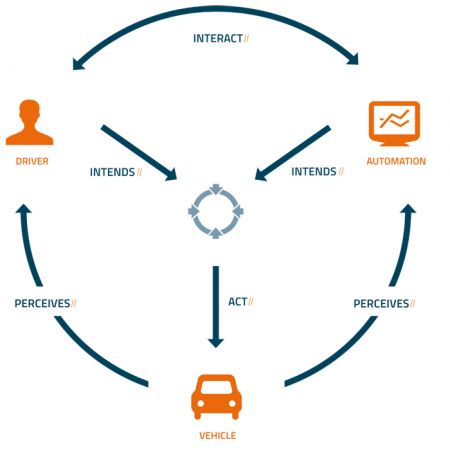
Research

Research
Human Factors

Collaborative control
Systems interact with humans at different points in time and to different degrees before, during and after a driven route or path. They also interact in different ways, e.g. in the vehicle or via remote control.
Collaborative automation means the idea of the complementary skills of drivers and automation used together to achieve one common goal.
Drivers' intentions
AdaptIVe investigates how drivers’ intentions and actions should be taken into account in the design of automated systems.
Functional requirements related to human factors will be delivered. They will describe how information, warnings and interventions should be implemented in continuous driving situations as well as in event-based support situations.
Human Machine Partnership
For optimised relations between human and machine, it is best to see them as partners instead of reducing humans to a back-up or monitoring element. Humans make poor monitors due to vigilance and other issues.
Objectives
- Develop high-level use cases for test and development throughout the project.
- Collect research issues on the interaction of drivers with automation in vehicles that currently remain uninvestigated or unresolved.
- Conduct experiments in different laboratory settings, including dynamic driving simulators, and, if suitable, also instrumented test vehicles. Evaluate the results.
- Create functional requirements and decision strategies for collaborative automation in particular situations.


